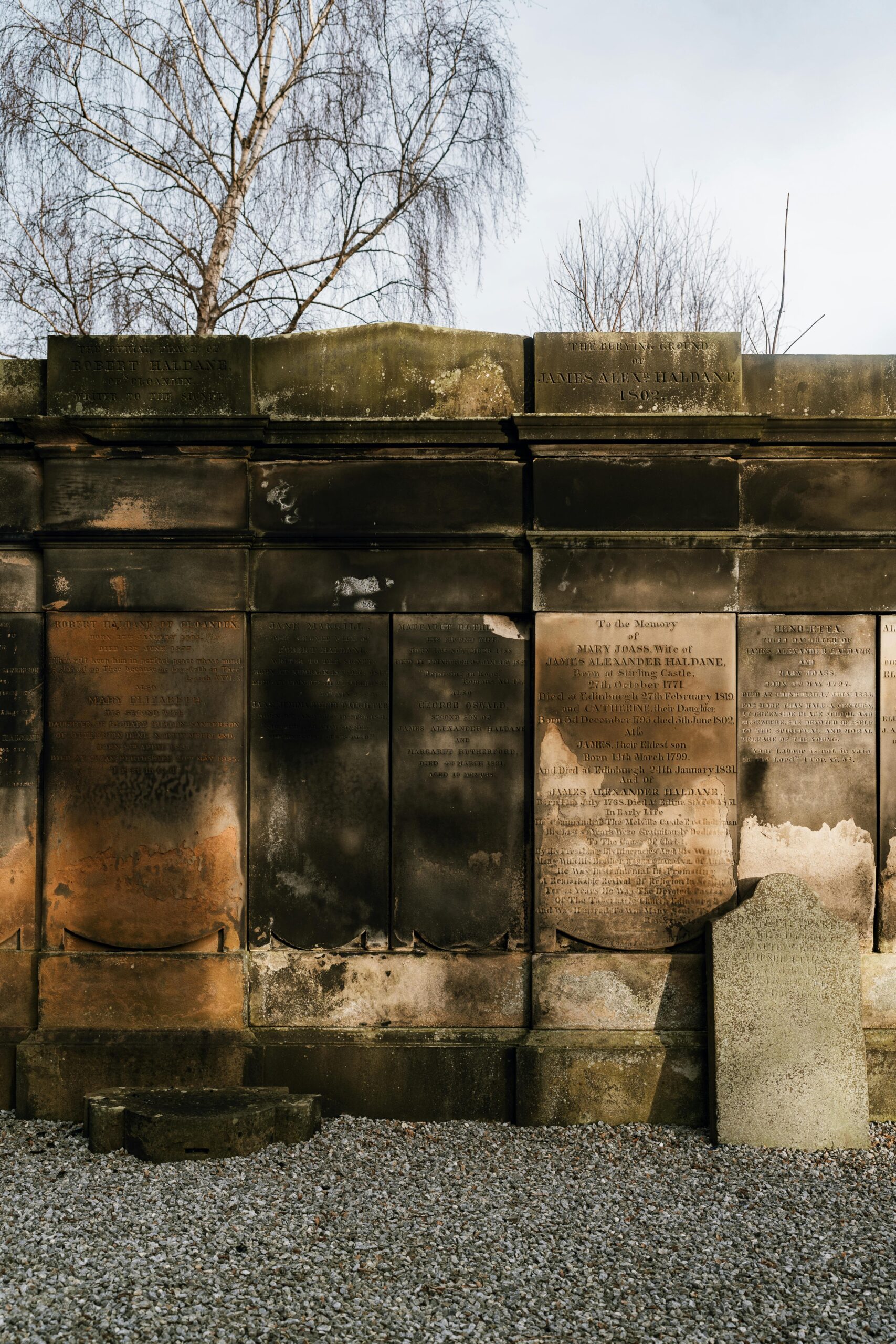Nestled in the heart of Edinburgh, the Scott Memorial stands as a breathtaking tribute to one of Scotland’s most beloved literary figures, Sir Walter Scott. Have you ever wondered what makes this iconic monument a must-see destination for travellers and history enthusiasts alike? With its intricate Gothic spires and awe-inspiring architecture, the Scott Monument Edinburgh is not only a feast for the eyes but also a window into the rich cultural heritage of the city. Visitors often ask, “What is the best time to visit the Scott Monument?” or “How can I explore the hidden details of this stunning landmark?” Whether you’re a passionate fan of classic literature or simply seeking the perfect hidden gems in Edinburgh, this monument offers an unforgettable experience. Rising majestically in Princes Street Gardens, the Scott Monument invites you to climb its narrow spiral staircases for panoramic views of Edinburgh’s skyline, making it one of the top things to do in Edinburgh for tourists. Don’t miss out on discovering the fascinating stories behind the statues and inscriptions that adorn this magnificent structure. So, are you ready to uncover the secrets of the Scott Memorial Edinburgh and immerse yourself in a world where history and art collide? Your unforgettable Edinburgh adventure starts here!
Unveiling the Scott Memorial Edinburgh: 7 Fascinating Facts You Never Knew
The Scott Memorial Edinburgh: A Quirky Dive Into History
If you ever find yourself wandering around the historic streets of Edinburgh, you might stumble upon a rather grand structure called the Scott Memorial Edinburgh. Now, not really sure why this matters, but this monument is dedicated to Sir Walter Scott, a chap who wrote a lot of books (some of them quite famous, actually). The memorial itself is a gothic spire that looks like it’s trying to poke the sky with its pointy finger. It’s said to be the largest monument to a writer in the whole world – though who measured that, I don’t know.
A Brief History of the Scott Monument
Built in the 19th century, the Scott Memorial Edinburgh was erected in 1844, which means it’s older than some of your great-grandparents’ grandkids. The architect George Meikle Kemp, who designed the memorial, had dreams big enough to match the spire’s height of 200 feet. Tragically, Kemp drowned before the monument was finished. Bit of a sad backstory, but I guess that adds some drama to the whole thing.
| Year | Event |
|---|---|
| 1840 | Construction of the memorial started |
| 1844 | The memorial was completed |
| Present day | Popular tourist attraction in Edinburgh |
Why It’s Worth The Visit (Or Maybe Not)
Honestly, the Scott Memorial Edinburgh looks quite spectacular from the outside. The gothic design, with its intricate carvings and statues of characters from Scott’s novels, gives a certain medieval vibe that might make your Instagram followers jealous. But here’s the thing, climbing the 287 steps to the viewing platform can be a bit of a nightmare if you’re not keen on heights or narrow staircases. Maybe it’s just me, but I felt like my legs were gonna give out halfway up.
Here’s a quick rundown of what you might experience:
- Tight spiral staircases that twist and turn (good exercise, bad for claustrophobia)
- Stunning panoramic views of Edinburgh (if you make it to the top)
- Numerous statues of characters like Rob Roy and Ivanhoe’s knights
- Occasional frustrating tourist crowds during peak season
The memorial is located in Princes Street Gardens, which is right in the heart of the city. So if you’re in the mood for a leisurely walk after a bit of shopping or café hopping, this spot fits perfectly.
Some Practical Tips For Visiting The Scott Memorial Edinburgh
| Tip | Explanation |
|---|---|
| Buy tickets in advance | The queues can be long, especially in summer |
| Wear comfortable shoes | Those 287 steps aren’t as fun as they sound |
| Visit early in the day | Less crowded, better photo opportunities |
| Don’t forget your camera | The views at the top are worth capturing (if you survive) |
Not sure if this is common knowledge, but the memorial also hosts occasional events and guided tours. These can be quite enlightening if you actually care about Sir Walter Scott’s life and works. And if you don’t, well, the views and architecture might be enough to keep you entertained.
The Literary Connection (Because It Matters, Sort Of)
Sir Walter Scott was a Scottish novelist and poet, famous for works like Ivanhoe and Rob Roy. His stories, often set in the Scottish Highlands, have shaped how many people imagine Scotland. The Scott Memorial Edinburgh celebrates not just the man, but also his impact on literature and Scottish identity. Not that everyone is a fan, mind you. Some say he romanticised history a bit too much. Maybe it’s just me, but I think all writers do that to some extent.
There’s a statue of Scott seated with his dog Maida at the base of the monument. It’s quite a charming little detail, though I wish they had included a statue of Maida’s paws or something because dogs deserve more recognition, don’t they?
Breaking Down The Key Features Of The Scott Memorial Edinburgh
| Feature | Description |
|---|---|
| Height | Approximately 200 feet (61 metres) |
| Steps | 287 spiral stone steps to the viewing platform |
| Architectural Style | Victorian Gothic |
| Sculptures | 64 figures from Scott’s novels carved into the structure |
| Location | Princes Street Gardens, Edinburgh |
Some locals say the spire looks a bit like a giant pencil stuck in the ground, and honestly, I can’t unsee that now. The carvings are impressive though, especially if you have a keen eye for details. Each statue tells a story from Scott’s novels, making it a bit like a stone comic book.
Why The Scott Memorial Edinburgh Is Still Relevant Today
You might be wondering, why bother with a memorial to
How the Scott Memorial Edinburgh Captures Scotland’s Literary Heritage
The Scott Memorial Edinburgh: A Quirky Look at the Famous Landmark
If you ever find yourself wandering through Edinburgh, chances are you’ll stumble upon the Scott Memorial Edinburgh. It’s one of those iconic things that pretty much everyone recognises but maybe don’t really know much about. Honestly, it’s like that one mate at a party you kinda know but never really chat to. The monument itself is a towering, gothic spire, dedicated to Sir Walter Scott, a bloke who wrote a lot of books about Scotland and stuff. But why does a statue of a writer get such a grand memorial? Not really sure why this matters, but apparently he was a big deal.
A Quick History Sheet on Scott Memorial Edinburgh
| Year Built | Architect | Style | Height | Location |
|---|---|---|---|---|
| 1840 | George Meikle Kemp | Gothic Revival | 200 feet (61 m) | Princes Street, Edinburgh |
The memorial was constructed in 1840, which means it is nearly 200 years old – that’s pretty old, right? The architect, George Meikle Kemp, designed it in this ornate, gothic revival style that some people finds quite stunning, others think it’s a bit over the top. The spire reaches about 200 feet into the sky, so it’s pretty hard to miss when you’re wandering down Princes Street. Maybe it’s just me, but I feel like the height is a bit showy for a writer’s monument.
What’s Inside the Scott Memorial Edinburgh?
Inside the spire, there’s a narrow spiral staircase that visitors can climb, if they’re brave enough or in decent shape, to get a fine view over Edinburgh. It’s not for the faint-hearted, because the steps are old and kinda creaky, plus you’ll have to squeeze past other people coming down or up. The climb is worth it though, cause you get a cracking view of Edinburgh Castle and the surrounding city. Here’s a quick list of what you can expect inside:
- Spiraling staircase with 287 steps
- A statue of Sir Walter Scott seated with his dog
- Panoramic views of Edinburgh
- Some creepy old stone carvings
The statue of Scott himself shows him sitting comfortably with his beloved dog, Maida, which is a nice touch. Though, honestly, some of the stone carvings inside do look a bit spooky, like something out of a horror flick.
Why Visit the Scott Memorial Edinburgh?
You might wonder, why bother visiting the Scott Memorial Edinburgh when there’s so many other cool things in the city? Well, for starters, it’s free to enter, which is always a bonus. Plus, it’s smack bang in the middle of Princes Street Gardens, a beautiful park that’s lovely for a stroll or a picnic. The memorial itself is a great spot for photos, especially if you’re into historic architecture or just want to impress your friends with some insider knowledge.
Some practical tips if you plan to visit:
| Tip | Details |
|---|---|
| Best time to visit | Early morning or late afternoon to avoid crowds |
| Entry fee | Free |
| Accessibility | Not wheelchair friendly due to narrow stairs |
| Nearby attractions | Edinburgh Castle, Princes Street Gardens, Royal Mile |
Not all that glitters is gold – The Quirks of Scott Memorial
There’s some stuff about the Scott Memorial Edinburgh that might irk a few visitors. For one, the staircase can be quite intimidating and definitely not for kids or anyone with mobility issues. Also, the memorial is quite exposed to the elements, which means on a windy or rainy day, climbing up there feels like a bad idea. And oh, the gothic style? Some people just find it a bit gloomy or overbearing, like a massive pointy tooth poking up in the middle of the city.
Maybe it’s just me, but the whole thing kinda looks like a giant pencil or a needle sticking out of the ground, which is funny when you think about it. And if you’re wondering if there’s a café or souvenir shop nearby, well, there’s none right at the base, so you’ll have to head elsewhere for a cuppa.
In case you’re curious, here’s a small comparison of Scottish literary memorials you might wanna check out too:
| Memorial | Location | Dedicated To | Style | Admission |
|---|---|---|---|---|
| Scott Memorial Edinburgh | Princes Street | Sir Walter Scott | Gothic Revival | Free |
| Burns Monument | Regent Road | Robert Burns | Neoclassical | Free |
| Stevenson Memorial | Princes Street | Robert Louis Stevenson | Modern | Free |
If you’re a fan of Scottish
The Untold Stories Behind Scott Memorial Edinburgh: Secrets of Sir Walter Scott’s Legacy
The Scott Memorial Edinburgh: A Quirky Dive into History and Stone
If you ever find yourself wandering the streets of Edinburgh, you might stumble upon the Scott Memorial Edinburgh — that towering gothic spire which looks like it was plucked straight out of some dark fairy tale. Honestly, this monument is hard to miss, standing proudly in Princes Street Gardens, but not many people really know what’s going on with it. Let’s unpack this curious piece of history, though I’m not really sure why this matters, but someone has to tell the tale, right?
A Bit of Background on the Scott Memorial Edinburgh
So, the memorial was erected in honour of Sir Walter Scott, a Scottish author who wrote a bunch of famous novels like “Ivanhoe” and “Rob Roy”. He was kind of a big deal back in the 19th century, though nowadays I wonder how many folks actually remember his name without Googling it. The monument was built between 1840 and 1846, roughly speaking, after Scott had passed away in 1832. It looks like a giant medieval cathedral tower, but it’s just a monument, not a building you can enter.
Here’s a quick sheet that breaks down some key facts:
| Feature | Details |
|---|---|
| Location | Princes Street Gardens, Edinburgh |
| Architect | George Meikle Kemp |
| Style | Victorian Gothic |
| Height | 200 feet (about 61 metres) |
| Construction Period | 1840 – 1846 |
| Purpose | To commemorate Sir Walter Scott |
You might think it was easy building such a spire in the 19th century, but believe me, it wasn’t. The architect Kemp, who was actually a joiner by trade, won the design competition but tragically drowned before the monument was completed. Talk about a dramatic twist, eh?
Why Does the Scott Memorial Edinburgh Look So Fancy?
It’s all about the gothic revival style, which was super popular back then. The spire is full of intricate carvings, statues, and loads of little details that you might miss if you just stroll past without looking up. Maybe it’s just me, but I feel like statues on monuments always look a bit grumpy or serious — probably because they’re stuck there for centuries.
Inside the monument there’s a spiral staircase that leads to a viewing platform. Not many people climb it nowadays, probably because it’s narrow and a bit scary. But if you do, you get a cracking view of Edinburgh’s skyline — Arthur’s Seat, the Castle, and all the busy streets. It’s like a mini adventure for a small fee, and honestly worth the climb if you fancy a bit of exercise and history combined.
Visitors’ Quick Tips for Scott Memorial Edinburgh
- Wear comfy shoes, the stairs ain’t no joke.
- Bring a camera, you’ll want snaps of the views.
- Visit during daylight, because climbing in the dark? Nope.
- Keep an eye on kids, the staircases can be tricky.
- Don’t forget to look up at the carvings; they tell stories from Scott’s novels.
A Table of Visitor Info:
| Info | Details |
|---|---|
| Opening Hours | 10:00 AM – 6:00 PM (varies seasonally) |
| Admission Fee | Small charge, around £6 |
| Accessibility | Not wheelchair-friendly |
| Nearest Transport | Princes Street Station, buses, trams |
| Facilities | Nearby cafes and restrooms |
Not really sure why this matters, but the monument took ages to be accepted by the public. Some people thought it was too gaudy or over the top, but hey, Victorian tastes were pretty dramatic. Today it’s one of Edinburgh’s iconic landmarks, even if it sometimes gets overshadowed by the Castle or the Royal Mile.
What Makes the Scott Memorial Edinburgh Unique?
- It’s the largest monument to a writer in the world, or at least that’s what the brochures claim.
- The gothic style makes it look like it belongs in a Harry Potter film.
- It’s an example of a “folly” — a decorative building without real practical purpose.
- The statues around the base represent characters from Scott’s novels, which is a nice touch if you’re into literature.
I heard that some locals just call it “the Scott Monument” without bothering with the full name, which sounds a bit lazy but also practical. If you want to impress your mates, drop the full Scott Memorial Edinburgh phrase with pride.
A Quick List of Characters Featured on the Scott Memorial Edinburgh:
- Lady of the Lake
- Rob Roy
- Ivanhoe
- Waverley
- Marmion
Each statue is carved with stunning detail, although some of them look a bit weather-be
Why Visit the Scott Memorial Edinburgh? Top 5 Reasons It’s a Must-See Landmark
The Scott Memorial Edinburgh: A Curious Walk Through History
If you ever find yourself wandering the streets of Edinburgh, you might stumble upon the Scott Memorial Edinburgh standing tall and proud in Princes Street Gardens. It’s one of those monuments that you can’t help but notice, even if you’re not a history buff or a fan of old literature. Honestly, not really sure why this matters, but the memorial is dedicated to Sir Walter Scott, a famous Scottish novelist and poet. The structure itself is a towering Gothic spire, and it looks like something out of a fairy tale or maybe a Harry Potter film set.
Now, let’s get a bit nerdy with some facts, shall we? Here’s a little table showing some key details about the Scott Memorial Edinburgh:
| Feature | Details |
|---|---|
| Location | Princes Street Gardens, Edinburgh |
| Built | 1840-1844 |
| Architect | George Meikle Kemp |
| Height | Approximately 200 feet (61 meters) |
| Style | Gothic Revival |
| Purpose | To honour Sir Walter Scott |
It’s quite impressive that this memorial took about 4 years to build. Kemp, the architect, was actually a joiner and cabinetmaker before he designed this. I mean, who goes from making furniture to building a giant stone spire? Must be some serious skills there. Unfortunately, Kemp died before the monument was completed, which is a bit tragic if you ask me. The poor guy never got to see his masterpiece finished.
Walking around the Scott Memorial Edinburgh is like stepping back in time. The intricate carvings and statues represent characters from Scott’s novels, and some people say you can almost feel the stories coming to life around you. Maybe it’s just me, but I feel like the memorial kinda has this spooky vibe if you visit at dusk. The shadows cast by the spire and the surrounding trees create an eerie atmosphere, perfect for ghost stories or teenage dares.
If you’re thinking of climbing the memorial, be warned: it’s not for the faint-hearted. There’s a narrow spiral staircase inside that leads to the top, but it’s quite tight and a bit of a squeeze. The view from the top is meant to be stunning, offering panoramic sights of Edinburgh’s skyline, including the castle and Arthur’s Seat. But honestly, I wonder if it’s worth the claustrophobia just to snap a few photos. Still, for the brave souls, it’s an experience hard to forget.
Here’s a quick list of what you might spot when you climb the Scott Memorial Edinburgh:
- Edinburgh Castle in the distance — looking majestic as always.
- Arthur’s Seat, the famous hill and ancient volcano.
- The bustling Princes Street below with shops and tourists.
- The Firth of Forth, if the weather is clear enough.
- Various statues and carvings on the memorial itself, up close.
For those who prefer staying on the ground, the gardens around the memorial are lovely for a stroll. Princes Street Gardens is a popular spot for locals and tourists alike, especially during summer or the Christmas market season. The juxtaposition of the gothic memorial against the colourful flowers and green lawns makes for some great photos, even if you’re no professional photographer.
One thing that gets me is how many people pass by the Scott Memorial Edinburgh and don’t really know who Walter Scott was. The guy was a big deal in the 19th century — wrote “Ivanhoe,” “Rob Roy,” and a bunch of other novels that inspired movies and TV shows. But these days, it seems like he’s kinda been forgotten outside of literary circles. Maybe it’s just me, but I think monuments like this help keep his memory alive, even if most visitors just see it as a cool piece of architecture.
If you’re planning a visit, here’s a little practical insight sheet:
| Tip | Advice |
|---|---|
| Best time to visit | Early morning or late afternoon for fewer crowds |
| Ticket info | Free to view outside; small fee for climbing |
| Accessibility | Not wheelchair-friendly for climbing; gardens are accessible |
| Nearby attractions | Edinburgh Castle, National Gallery, Royal Mile |
| Photo tips | Bring a wide-angle lens for the spire shots |
A quick note about accessibility: sadly, the climb isn’t suitable for everyone because of the narrow stairs and height. But the gardens and surroundings offer plenty to explore without the hassle. Plus, the location is super central, so you can easily combine it with other sightseeing activities.
And, oh! If you’re a fan of quirky facts, here’s a little list of oddities related to the Scott Memorial Edinburgh:
- The spire was nicknamed “The Rocket” by locals because of its sharp, pointed design.
- George Me
Exploring the Architectural Marvels of Scott Memorial Edinburgh: A Detailed Guide
If you ever find yourself wandering around the historic streets of Edinburgh, you might stumble upon the Scott Memorial Edinburgh, a towering gothic monument that’s hard to miss. Honestly, it’s one of those places that make you go “wow” but also “huh, what’s that all about?” The memorial was built to honour Sir Walter Scott, a famous Scottish novelist and poet — though, sometimes I wonder if people really know who he was or just like the building because it looks cool. Anyway, let’s dive into this grand structure and why it’s become such a staple in Edinburgh’s landscape.
What is the Scott Memorial Edinburgh?
The Scott Memorial Edinburgh is a Victorian gothic spire located in Princes Street Gardens. It was erected in the 1840s, and if you ask me, they went a little overboard with the ornamentation. The spire stands about 61 meters tall, and its intricate detailing is meant to celebrate Sir Walter Scott’s literary achievements. Now, Scott was best known for works like Ivanhoe and Waverley, but I’m not really sure why this matters, but people still flock here to admire the memorial every year.
| Feature | Description |
|---|---|
| Location | Princes Street Gardens, Edinburgh |
| Height | Approximately 61 metres |
| Architectural Style | Victorian Gothic |
| Year Completed | 1846 |
| Dedication | Sir Walter Scott, Scottish Novelist & Poet |
How to get there and what to expect
Getting to the Scott Memorial Edinburgh is pretty straightforward. If you are in the city centre, just head towards Princes Street Gardens — it’s practically in the middle of everything. The monument is within walking distance from Edinburgh Waverley Station, so no excuse not to visit if you’re using public transport.
Once you’re there, you might wanna climb up the spiral staircase inside the monument. But fair warning, it’s narrow and steep — not really ideal for anyone who is afraid of heights or small spaces. Also, the steps are pretty worn down from years of visitors tramping up and down, so watch your footing. If you’re feeling adventurous, the view from the top is quite spectacular, offering a panoramic glimpse of Edinburgh’s skyline.
Some quirky facts about the Scott Memorial Edinburgh
Maybe it’s just me, but I always find it fascinating when monuments have weird or unknown facts attached to them. Here’s a quick list of some you might not hear in the usual tourist spiel:
- The memorial took nearly 10 years from design to completion.
- It was designed by George Meikle Kemp, who tragically drowned before seeing it finished.
- The statues around the base represent characters from Scott’s novels — but honestly, some of them look more like random Victorian folks in fancy clothes.
- It’s often said that the spire resembles a giant pencil; don’t ask me why, but visitors often joke about it.
| Quirky Fact | Explanation |
|---|---|
| Lengthy Construction | Took almost a decade to finish |
| Designer’s Tragic End | George Meikle Kemp drowned before completion |
| Character Statues | Represent figures from Scott’s novels |
| Nickname | Locals sometimes call it the “Giant Pencil” |
Why does the Scott Memorial Edinburgh matter today?
In today’s world, you might ask, why do we still care about a 19th-century writer and a gothic spire? Well, for one, the memorial is a reminder of Edinburgh’s rich literary heritage. It’s not just a pretty thing to look at (though it definitely is), but it also symbolises the city’s pride in its cultural icons. Plus, if you’re looking for a photogenic spot, this place is perfect — especially during sunset when the light hits the spire just right.
On the downside, some critics argue that the memorial is a bit outdated or too grandiose for a single writer. Also, the gothic style isn’t everyone’s cup of tea. But hey, to each their own. The Scott Memorial Edinburgh continues to be a focal point for locals and tourists alike, drawing people who appreciate history, architecture, or simply a nice walk in the gardens.
Visiting tips for the Scott Memorial Edinburgh
If you planning a visit, here are some quick tips to make your trip more enjoyable and less of a hassle:
- Try to visit early in the morning or late afternoon to avoid the biggest crowds.
- Don’t forget to bring a camera, the views from the top are worth it.
- Wear comfy shoes if you plan to climb the stairs — they aren’t the easiest.
- Keep an eye on the weather, since Edinburgh can be unpredictable, and the top of the spire is exposed.
- If you’re with kids, maybe
Conclusion
In conclusion, the Scott Monument in Edinburgh stands as a striking tribute to Sir Walter Scott’s literary legacy and remains one of the city’s most iconic landmarks. Its impressive Gothic architecture, intricate detailing, and panoramic views from the viewing platform offer visitors a unique blend of history, art, and breathtaking scenery. Whether you are a literature enthusiast eager to connect with Scotland’s cultural heritage or a tourist seeking memorable experiences, the monument provides an enriching glimpse into the past. Situated in the heart of Princes Street Gardens, it is easily accessible and well worth the visit during any trip to Edinburgh. To truly appreciate the monument’s significance and the stories it embodies, consider joining a guided tour or exploring the nearby Scott collections. Embrace the opportunity to step back in time and celebrate one of Scotland’s greatest literary figures by paying a visit to the Scott Monument – an enduring symbol of Edinburgh’s rich cultural tapestry.













